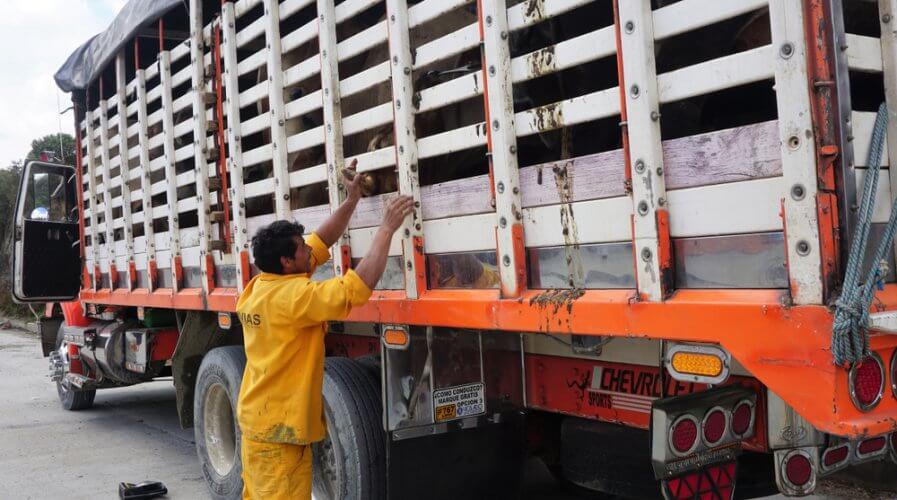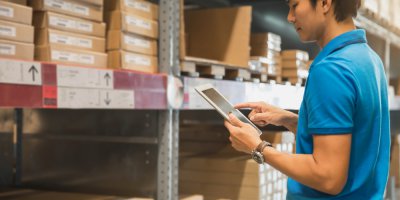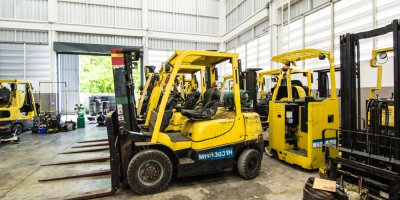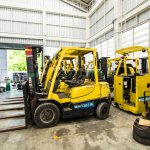
Vietnam’s Logivan helps truck owners make the most of their miles. Source: Shutterstock
How telematics helps Logivan run a multi-million dollar business
ALTHOUGH technology is said to be transforming the logistics and supply chain industry, the pace of change is quite slow, allowing players to catch up with innovations than causing them to lose business to entirely new players.
However, small disruptors do exist in pockets across the world, creating exciting innovations that could accelerate digitization in the industry and capture the market almost overnight.
Logivan is one such business. Founded in 2017 in Vietnam, the one-and-a-half-year-old business recently raised US$5.5 million taking its total capital to US$7.9 million in just three rounds of funding — but the company has a long way to go.
In an exclusive interview with Tech Wire Asia, Logivan Executive Nam Le explained what the company does and explained more about its recent press release promising more investments in data analysis and cross-platform integration to increase supply chain efficiency.
“Logivan’s mission is to find cargo for all empty trucks so no truck will ever return empty. In order to match cargo effectively and efficiently with trucks, it’s important for us to know when a truck will be empty.
“To be able to predict this and whether or not they will be able to accept the cargo, we need to collect huge amounts of data and make sense of it.”
According to Le, Logivan serves two groups of customers: Cargo owners and truckers.
For truckers, Le believes that the ability to fill their empty return trucks is a big draw since it increases their utilization, which means more revenue and profit.
For cargo owners on the other hand, besides reducing transportation costs, Logivan is also able to help guarantee a truck which is of great value to most businesses.
“With our large trucker base (34,000 and counting), we are confident that we could satisfy their demand when they need it.”
Although the company claims to have a gross merchandise value of over US$1 million, one of its biggest challenges is user adoption.
“Since we are a young company with a new concept in the market, many users are hesitant to disrupt their already familiar workflow. As our technology matures, it will be easier to use while able to offer more benefits, we are confident that more people will switch to us.”
Telematics drives tomorrows logistics forward
Le’s business heavily depends on telematics. In fact, given the direction that the business is going in, it’s evident that tomorrow’s Logivan will be more intelligent and agile when matching drivers with truckers.
As a technology company focusing on first and middle mile delivery, Logivan emphasizes that it wants to not only reduce cost by utilizing empty returning trucks but also improve inventory management (including inventory on the move like in a truck) through real-time tracking, trucking demand/supply forecasting.
Since Logivan is committed to making more investments into collecting and analyzing data, Tech Wire Asia asked Le more about the data the company collects and how it uses it.
“We collect many data both real-time and historical data, including but not limited to truck location, truck capacity, box size, what kind of cargo truckers prefer, what kind of trucks cargo owners prefer, what route a truck prefers, and preferred (maximum) waiting time.”
All of these data points help Logivan make better predictions for the future.
“For example, we know the current location of a truck, thus being able to predict when will they be at their delivery destination (at which time they’ll unload their cargo and prepare to return). We can then match this truck with new cargo nearby (which is willing to wait till the truck gets to the location),” explained Le.
Digital savvy doesn’t always mean digital first
Although Logivan only started in 2017 and is a digital-first business, not all parts of the company are digital — and that’s not a bad thing.
“For example, at the moment, a large proportion of our customers (both cargo owners and truckers) prefer to meet/phone before accepting a deal.
“As the technology is new, they feel the need to know the human on the other side before making a transaction — similar to the old days where customers would call in to check and ask questions before buying a product on TV or online.”
Logivan has molded its processes to suit local needs — which seems to be helping the company grow quickly.
If the company had been rigid about being technology-first and digital-only, it might not have received the traction it has in the Vietnamese market where human connections are greatly valued, especially for business transactions.
“We believe that as technology progresses and people get familiar with our product and offering, they will be more comfortable relying on it for daily tasks.”
While there’s nothing to prove Logivan’s conviction in its product right now, the very concept is definitely something many companies are exploring.
In time, as the company reaches critical mass, it might just be the disruptor that keeps industry experts up at night.
READ MORE
- Ethical AI: The renewed importance of safeguarding data and customer privacy in Generative AI applications
- How Japan balances AI-driven opportunities with cybersecurity needs
- Deploying SASE: Benchmarking your approach
- Insurance everywhere all at once: the digital transformation of the APAC insurance industry
- Google parent Alphabet eyes HubSpot: A potential acquisition shaping the future of CRM








